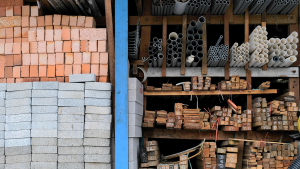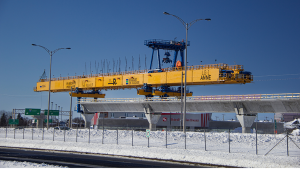The equity market is a leading economic indicator as investors make their real time buy/sell decisions based on factors that will influence the financials of companies in the future.
The historic performance of the stock market is often a poor guide for upcoming results.
However, the quarterly results reported by companies provide starting points and indicate trends not only for their own performance, but also for their sectors, industries and sometimes economies overall.
In most cases, strong revenue and earnings announcements in quarterly reports push share prices to higher levels. However, in some situations, the markets disregard sales and income numbers and concentrate on other seemingly more important indicators.
This was the case with Caterpillar, which reported 2021 Q4 financial results on Jan. 28.
Even though the company’s quarterly earnings per share and sales revenues exceeded expectations (EPS of $2.69 and revenue of $13.8 billion beat forecasts by $0.43 and $580 million respectively), the company’s share price went down dramatically.
On the day when Caterpillar published its quarterly results, the company was the largest loser in the Dow Jones Industrial Index, with a share price drop of 6.3 per cent.
This sharp decline dragged down the performance of other shares in heavy machinery and construction.
So why did investors aggressively sell shares of Caterpillar and other companies in the sector, despite better-than-expected financial results?
The answer lies in Caterpillar’s massive decrease in profitability. Caterpillar’s operating margin dropped by 600 bps to 11.7 per cent, as costs went up more than prices.
This upwards pressure related to costs resulted from the combination of increased rates for freight, higher prices of materials and increased production expenditures. Most of these were caused by fractured supply chains. The company expects this decrease in profitability is likely to continue at least through the first quarter of this year.
Caterpillar indicated it raised prices for its equipment to reflect the inflation in raw materials and tried to mitigate damage from broken supply channels.
Unfortunately, these efforts were not sufficient to counter the macroeconomic headwinds. Commodity prices are still likely to continue their climb for the rest of 2022.
There are two obvious reasons for this. First, the global economic recovery and the post-COVID reopening of various sectors will result in an increased demand for oil, gas and other raw materials. Second, in the world of high inflation, as well during times of elevated geopolitical risk, commodities play the role of a hedge. This also puts pressure on demand and consequently drives prices up.
Another important factor that negatively impacted Caterpillar’s margins was the decreasing demand for heavy machinery from China.
Revenues from China usually represent up to 10 per cent of the company’s business. Sales of construction equipment in the country dropped during the fourth quarter, driven by lower orders from local construction companies. The outlook for heavy machinery sales for the remaining months of 2022 is also not promising.
According to Bloomberg, Caterpillar’s Chief Financial Officer Andrew Bonfield said the following about Chinese construction market trends, “Overall, the market was about flat in 2021, but obviously we do expect the market to decline in 2022 given the construction outlook…There’s a range of forecasts out there – we look in the 10-ton and above excavator market – I think the range of forecasts out there are -10 per cent to -50 per cent, so it’s a very broad range. Your guess is as good as mine at this time.”
Worries about Chinese construction sectors surfaced at the end of last year when the major Chinese real estate developers, Evergrande and Kaisa, started showing signs of financial distress. Evergrande used to be the second largest Chinese real estate developer, with its business model based on the presale of new homes to finance future projects. Recently, the company suffered from a decline in transactions because of worsening liquidity and a significant decrease in demand.
The liquidity crisis started in the middle of 2021. It was triggered by the government’s crackdown on excess borrowing by companies in the real estate sector, which led to falling house sales as well as a decrease in confidence among buyers and investors. The problems in the Chinese property market continued in January and the 2022 outlook for the sector remains grim since developers remain cash squeezed and have sizable obligations to refinance their offshore debts.
From Caterpillar’s financial results, it seems clear 2022 is going to be challenging for the company itself as well as for the global construction industry overall.
Profitability of the sector will face headwinds from a high inflation rate in raw materials, broken supply chains, growing labour costs and increased geopolitical risks.
In addition, various regulatory and financial measures implemented by governments around the world, including deleveraging of the construction industry in China and increases in interest rates in developed markets, are likely to result in further pressure on the demand for new construction projects.
Dmytro Konovalov has over 10 years of experience in equity research and analysis for global markets at leading international financial institutions.










Recent Comments
comments for this post are closed